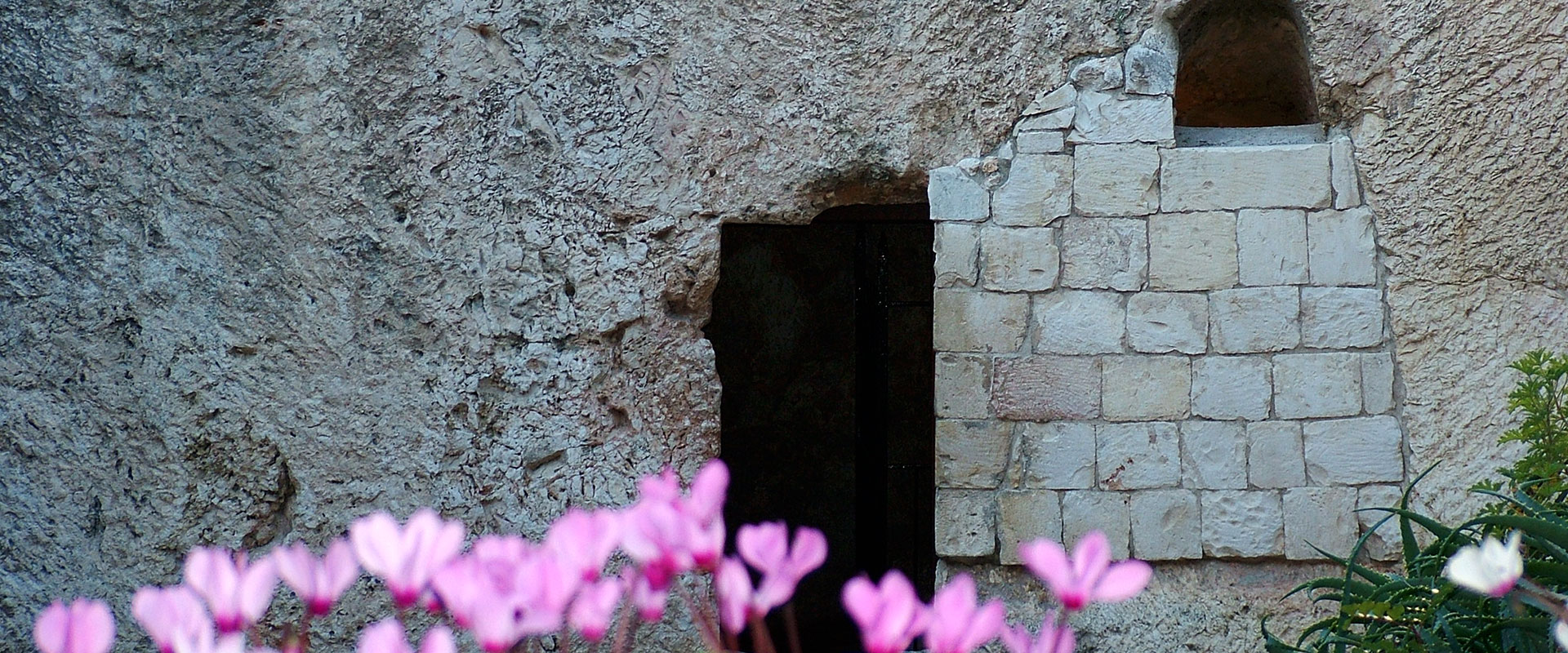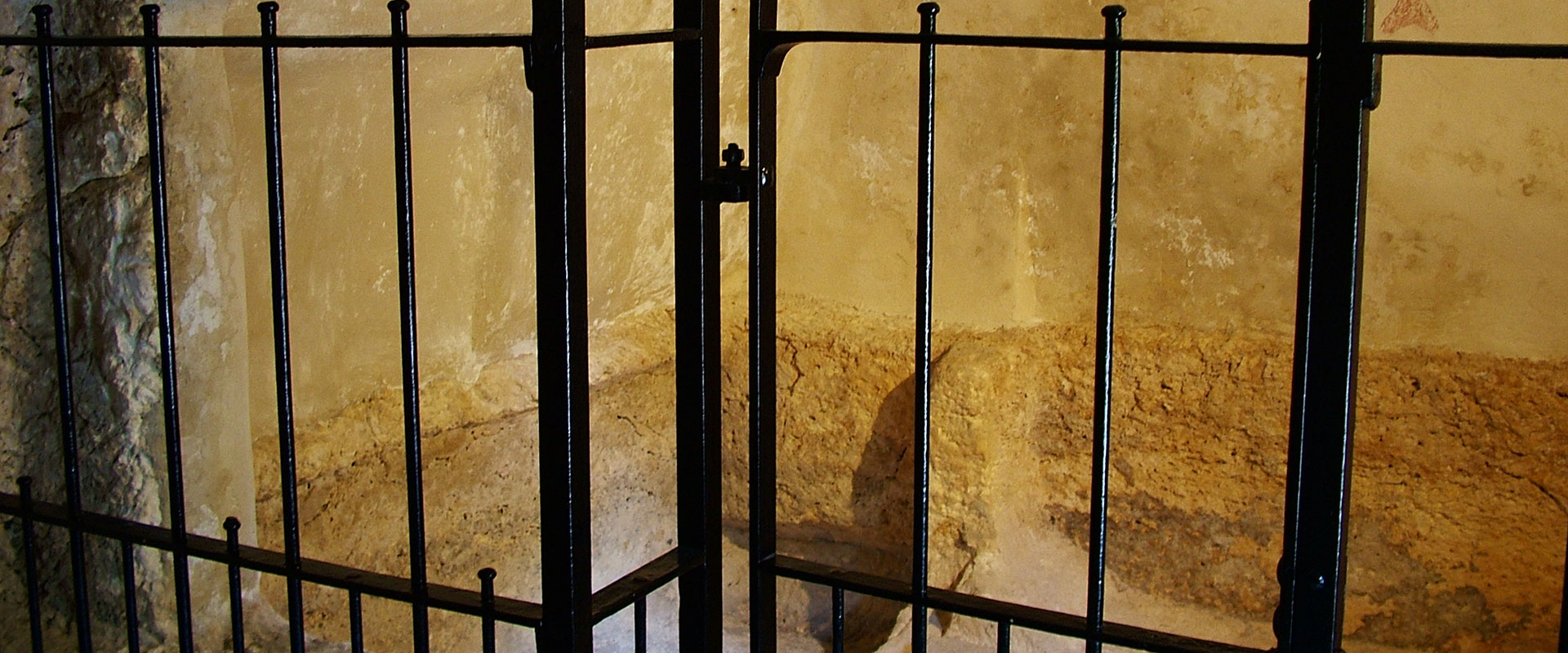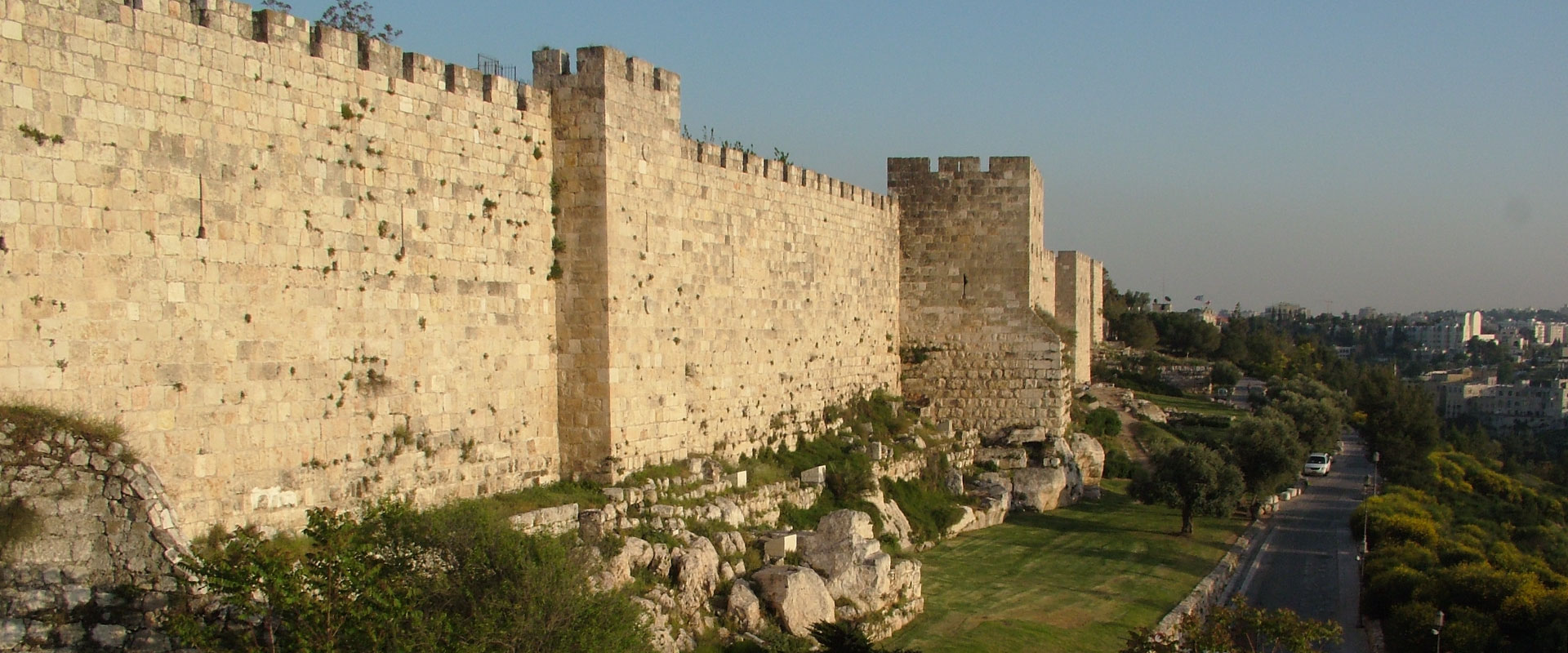The Garden Tomb is a famous and beautiful site located in east Jerusalem, believed by many to be the garden and sepulchre of Joseph of Arimathea and therefore possibly the spot where Jesus Christ was resurrected (Book of John 19:38-42).
Today, it is owned and managed by The Garden Tomb of Jerusalem Association, a Christian non-denominational philanthropy organization from the United Kingdom.

Located in the heart of Jerusalem with nearly a quarter of a million visitors, The Garden Tomb is where some Christians believe was the Garden of Joseph of Arimathea. It is also where some believe Jesus died, buried and then rose again from the dead. This beautiful oasis is a representation of the biblical accounts of the four Gospels, and what people see in the Garden matches perfectly with what the Gospels account for.
Visiting hours are every Monday to Saturday, from 08:30am to 5:30pm, although closed for lunch during the winter months. It is a tranquil, lush location where people come to worship and reflect. There are many charming places to sit and enjoy the sacred environment and all that it has to offer. Bewitched by its magnificence and holy grounds, many tour groups visit from all around the world to worship this sacred site.

Golgotha gol′gō̇-tha (Γολγοθᾶ, from Aramaic גֻּלְגַּתָּא, “a skull”): In three references (Mt 27:33; Mk 15:22; Jn 19:17) it is interpreted to mean κρανίου τόπος, “the place of a skull.” In Lk 23:33 AV it is called “Calvary,” but in RV simply “The skull.” From the NT we may gather that it was outside the city (He 13:12), but close to it (Jn 19:20), apparently near some public thoroughfare (Mt 27:39), coming from the country (Mk 15:21). was a spot visible, from some points, from afar (Mk 15:40; Lk 23:49).

Four suggested reasons why it was named Golgotha or "Skull".
(1) Skulls were found lying on that specific spot, therefore, it was presumed to be a place of public execution. Most assume that it began during the time of Jerome (346–420 AD), who refers to (3), to condemn it, and says that “outside the city and without the gate there are places wherein the heads of condemned criminals are cut off and which have obtained the name of Calvary — that is, of the beheaded.” Other writers later adopted this view as well. Contrary to this belief, there is no evidence that there was any dedicated spot for Jewish executions in the 1st century, and if there were, the corpses could have been allowed burial (Mt 27:58; Jn 19:38), in conformity with Jewish law (Dt 21:23) and with normal customs (Josephus, BJ, IV, v, 2).


(2) A more popular view is that the name was given because of the skull-like shape of the hill. However, there isn't any evidence from Greek writers or from the Gospels that the crucifixion occurred on a raised place at all. Indeed Epiphanius (4th century) says: “There is nothing to be seen on the place resembling this name; for it is not situated upon a height that it should be called (the place) of a skull, answering to the place of the head in the human body.” It is true that the tradition embodied in the name Mons Calvary appears as early as the 4th century, and is materialized in the traditional site of the Crucifixion in the church of the Holy Sepulcher, but that the hill was skull-like in form is quite a modern idea. Guthe combines (2) and (3) and considers that a natural skull-like elevation came to be considered, by some folklore ideas, to be the skull of the first man. One of the strangest ideas is that of the late General Gordon, who thought that the resemblance to a skull lay in the contours of the ground as laid down on the ordinance survey map of Jerusalem.
(3) That the name is in accordance with ancient pre-Christian tradition that the skull of Adam was found there. The first mention of this is by Origen (185–253 AD), who himself lived in Jerusalem 20 years. He writes: “I have received a tradition to the effect that the body of Adam, the first man, was buried upon the spot where Christ was crucified,” etc. This tradition was afterward referred to by Athanasius, Epiphanius, Basil of Caesarea, Chrysostom and other writers. The tomb and skull of Adam, located in an excavated chamber below the traditional Calvary, marks the survival of this tradition. This is by far the most ancient explanation of the name Golgotha and, in spite of the absurdity of the original tradition about Adam, it is probably true.
(4) The highly improbable theory that the Capitolium of Aelia Capitolina (a name that was given by Hadrian to his new Jerusalem) stood where the Church of the Holy Sepulcher now is and gave rise to the name Golgotha. This refers to the idea that the site first received the name Golgotha in the 2nd Century, and that all the references in the Gospels were inserted then. This is only mentioned as to be dismissed and incompatible with history and common sense.
“Golgotha,” ISBE, paragraph 24783.

